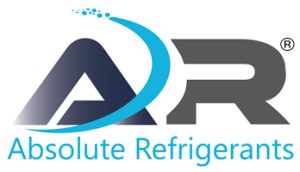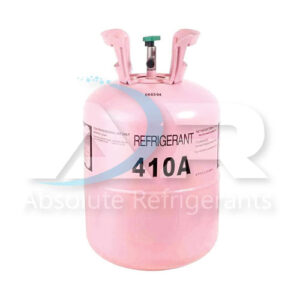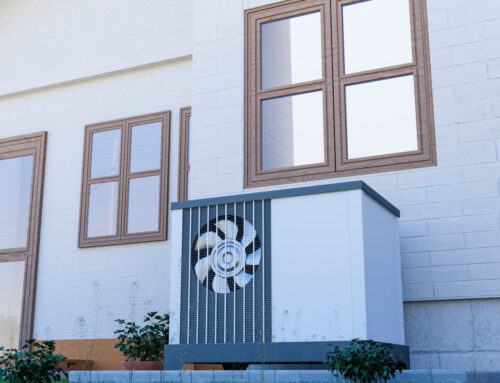R-410A Pros and Cons & Comparisons to Other Refrigerants
Want to learn more about the R-410A Pros and Cons & Comparisons to Other Refrigerants? Reliability, efficiency, and safety are the three most important traits of any refrigeration system. R-410A is a very popular refrigerant, and rightfully so. It’s energy-efficient and has superior leak protection properties that make it stands out compared to other refrigerants. While there are many benefits to R-410A as a refrigerant, you may have some questions about whether or not it’s the right fit for your HVAC system.
Choosing the right refrigerant can make all the difference in your business. Let’s dive into R-410A’s pros, cons, and comparisons to other refrigerants.
What Is R-410A?
R-410A, also known as HFC-410A, is a type of refrigerant used in commercial refrigeration and air conditioning systems. It is used in residential and commercial applications that include heating and cooling as well as dehumidification. Unlike older refrigerants like R12 or R22, R410A does not contain chlorine or bromine (which makes it non-flammable). Because of this, it can be used safely indoors without causing any damage to equipment or building materials if there is a leak.
It has been developed to replace R-22 as it slowly becomes depleted from the atmosphere. It is more efficient than the older R-22 refrigerant, which means that it can provide better cooling at lower temperatures.
Advantages of R-410A
R-410A has several advantages over other refrigerants, including:
- It’s less likely to leak and cause damage. R-410A is an ammonia replacement. It’s non-flammable and non-toxic, meaning it doesn’t pose a risk of explosion or release harmful fumes when it leaks. It’s so safe that it can be used in many more applications than older refrigerants like R22.
- It has a longer lifespan. Like other HFCs, R410A does not contribute to ozone depletion because it doesn’t contain chlorine atoms and has lower global warming potential (GWP) compared to other refrigerants such as R22, meaning it doesn’t contribute as much to climate change.
- R410A is more efficient than older refrigerants like R22 or R134a because it absorbs heat better than other gases out there right now. This means that your AC unit doesn’t have to work as hard to cool down your home — which saves you money on energy bills!
- While there are some upfront costs associated with converting from R-22 to R-410A, overall costs are lower because the unit will run more efficiently and not require maintenance or repair as often.
Disadvantages of R-410A
R-410A does not have any serious disadvantages. However, it does have some minor ones that should be taken into consideration when buying a refrigerant.
- Unsafe when inhaled: Though R-410A is ozone-friendly, it is still unsafe when inhaled. It can also cause irritation and damage to organs. So it is important to wear proper gear when handling this.
- High Pressure: R-410A works best at a pressure of at least 400 pounds per square inch (psi). If this pressure is exceeded, the compressor will wear out quickly. This means that if you have an old home with poor insulation and weak ductwork, you will need to install a booster fan as well as a larger condenser coil.
- Cost: Refrigerators with R-410A refrigerants are usually more expensive than those with other types of refrigerants such as R134A because of the extra engineering required to ensure safety in case there is a leak.
How R-410A Compares to Other Refrigerants
R410A vs. R22
R410A is an HFC refrigerant that was developed as a replacement for ozone-depleting substances such as R22. Unlike R22, R410A is non-ozone depleting and low in global warming potential (GWP). In addition, it has a higher capacity than R22, which means it can handle more heat transfer than other refrigerants. It also has a lower flammability rating than its predecessor and meets stricter safety standards set by the EPA and ASHRAE.
R410A vs. R134a
R410A and R134a are two of the most popular refrigerant gases used in residential and commercial air conditioning systems. They offer many of the same benefits to consumers, but there are also a few differences that make each one more suitable for different applications. The main difference between R410A and R134a is that R410A does not have any ozone-depleting properties. This means that it doesn’t harm the Earth’s ozone layer.
In addition, R410A uses less energy than R134a because it has a higher pressure capacity. This means that it can carry more heat from inside your home or office into your air conditioner’s compressor chamber and out into the atmosphere — which means less energy consumption overall.
R410A vs. R404A
R410A and R404A are both HFC refrigerants, but they have different boiling points. The boiling point of f. This means that R410A has a higher boiling temperature, which means it can be used in higher operating temperatures and still achieve the same cooling performance.
R410A also has a lower GWP than R404A (1,810 vs 3,992). This means that when it comes to global warming potential, less of an impact is made during emissions into the atmosphere.
Conclusion
If you’re installing a brand new HVAC system, you have the option of choosing between R-410A-based refrigerants and more traditional ones like R-22, which are no longer being produced in the U.S. It’s important to weigh all of your options before making that choice, however. Some R-410A systems are more expensive to install than their older counterparts, potentially offsetting any energy savings the new system can deliver.
If you are looking for the best possible place to buy R410A, Absolute Refrigerant is the answer. They don’t only have the refrigerant you need, but they will have it for a price that you will be happy to pay.







